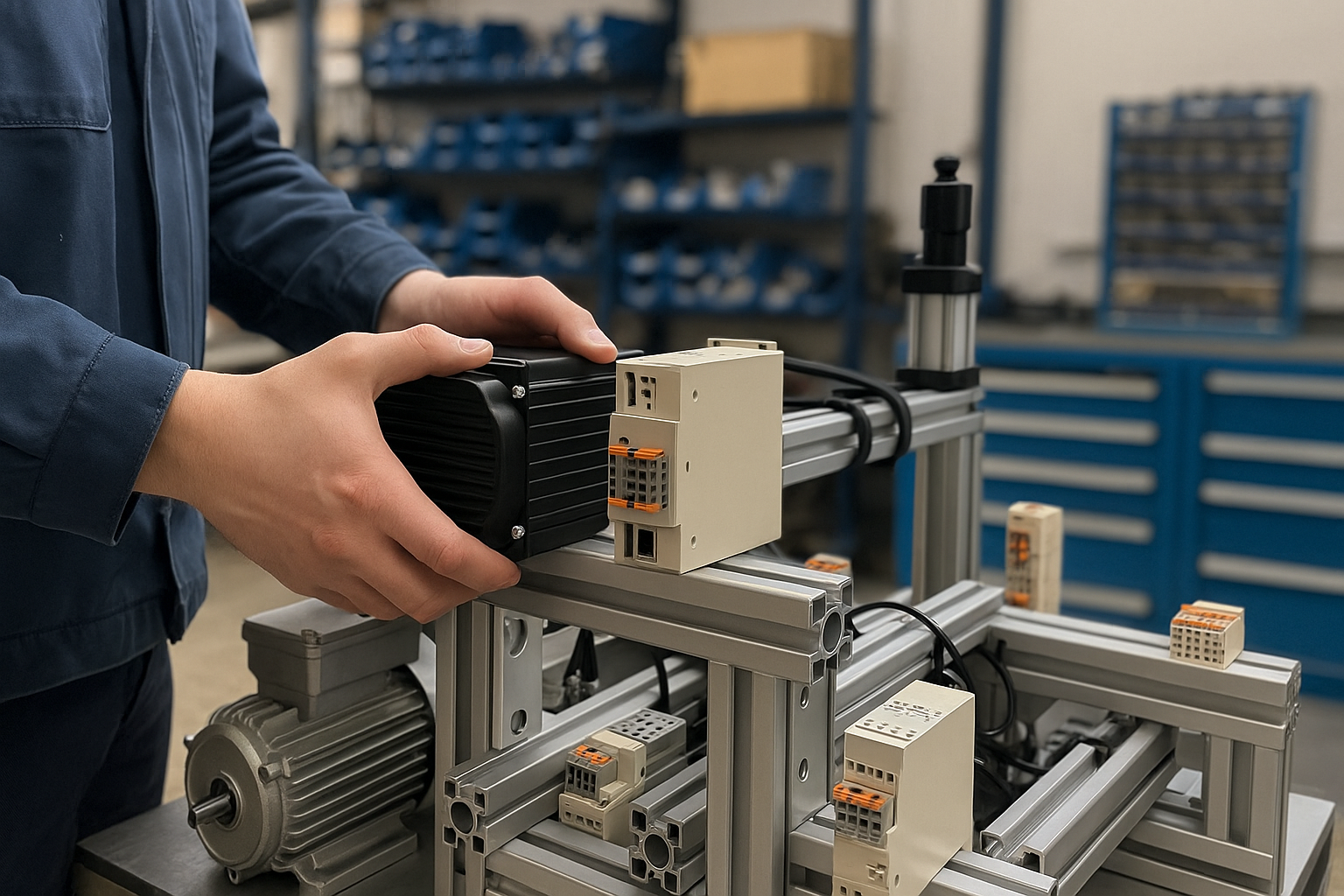Dividing complex technical systems into standardized modules has become one of the most efficient ways to speed up and simplify production in mechanical engineering. An approach that once came from software and architecture is now actively used in building machines — from CNC equipment to industrial robots. Modularity helps solve engineering tasks faster, cheaper, and with greater flexibility than traditional “from scratch” design
Why mechanical engineering shifted to modular construction
Many manufacturers faced the need to accelerate development cycles and reduce training costs when introducing new machine models. As a result, the focus moved from unique design to typical, repeatable solutions. For instance, in automated production lines, instead of designing a full machine from the ground up, engineers now assemble it from replaceable blocks: motor units, feed modules, control boxes, and so on.
This strategy allows engineers to build equipment like LEGO sets, where each block can be designed, tested, and mass-produced independently. More importantly, it enables manufacturers to adapt machines to specific customer needs without redesigning the entire system. This is especially useful in contract manufacturing, where customization is still crucial, but deadlines and budgets are tighter than ever.
Engineers from Chelyabinsk, working in a regional machine-building cluster, noted that switching to modular assembly reduced new product development from 6 to just 2 months. Digital models of these blocks made it easy to plug and play components with minimal edits. This streamlined approach eliminates bottlenecks during R&D, saving both money and nerves along the way.
How standardized modules are structured in production
A module is a functionally independent unit that can be replaced, upgraded, or modified without affecting the rest of the system. In mechanical engineering, modules fall into types: mechanical (e.g., gearboxes), electronic (control boards), hydraulic (pump stations), or software-based (CNC control). Each is designed to support universal connections and standardized interfaces.
One critical parameter of modularity is a unified form factor, which ensures the use of consistent mounting, cabling, and sizing. For instance, ISO-sized modules are widely used, offering compatibility between different suppliers. This doesn’t just speed up assembly — it simplifies servicing: if one block fails, it can be replaced without taking the entire machine offline.
Modern CAD/PDM systems play a huge role in supporting modular thinking. Each module is stored as an individual digital object with attributes and relational data. Engineers can drag and drop these into new assemblies and simulate performance before anything is built. Systems like this are used by companies such as KamAZ and MTZ, especially for designing large-scale vehicles where reliability and interchangeability are mission-critical.
Advantages of the modular approach for manufacturers
The most obvious benefit is faster product launch. With ready-made modules, there’s no need to reinvent the wheel for each new model. This is especially important for custom manufacturers who deal with varying specifications. Modular architecture allows them to reconfigure layouts without disturbing the working parts of the system. The result? Shorter design time and fewer costly errors.
Another key advantage is parallel development. Separate teams can design, test, and optimize individual modules at the same time, then integrate them into a single solution. This drastically cuts time-to-market and, in regulated industries like medical tech, helps meet evolving standards with less disruption.
There’s also a strong case for simplified maintenance. When something breaks, technicians can replace just the faulty module. This minimizes downtime and lowers repair costs. Some machine builders — especially those producing welding and pressing systems — even maintain “hot spares” in stock. These are critical modules kept ready to be swapped in within hours, eliminating the wait for external deliveries.
Limitations and pitfalls of modular assembly
Despite the benefits, modular systems aren’t without flaws. The biggest trade-off is performance. A universal module almost always underperforms compared to a custom-designed part. It may draw more power, weigh more, or operate less efficiently in edge-case scenarios.
Another issue is the initial cost of adopting modularity. Implementing a modular strategy means restructuring engineering and production workflows. Companies must build component libraries, define interface standards, and update their supply chains. For small manufacturers, these changes can be overwhelming and initially more expensive than the traditional custom-build approach.
Maintaining long-term compatibility is another headache. Modules designed years ago might not work with new systems, especially if interface standards evolve. Some companies solve this by building private modular ecosystems, like Komatsu has done in Japan. Their modules connect not only physically but also digitally through lifecycle management systems — forming a fully integrated smart platform.
Where modularity delivers the greatest impact
One of the leading sectors benefiting from modularity is agricultural machinery. Here, requirements shift constantly based on region, soil type, and climate. Modular systems — such as swappable tool heads, GPS units, and control systems — allow manufacturers to build highly adaptable machines without redesigning the chassis or engine.
Another powerful use case is robotic production cells, where each module (gripper, rotating base, feeder) can be swapped depending on the task. This is a game-changer in low-volume, high-mix manufacturing. Plants that offer “turnkey solutions” can reconfigure lines for new customers without bringing operations to a halt.
Also worth noting is the success of packaging equipment manufacturers. Their use of modular construction allows rapid adjustments for different product sizes — from bottles to cartons. Some even offer online machine configurators, where clients assemble their machine from prebuilt components, like Multivac in Germany. This boosts engagement and reduces pressure on sales teams.
The future of modular mechanical engineering: where things are going
The rise of digital twins, augmented reality, and AI is reshaping how modular systems are developed. In the future, modules will not just be physical parts but also data-rich digital objects that are pre-tested and optimized in virtual environments. This will allow engineers to simulate systems, catch flaws early, and tailor solutions with zero waste.
Companies like Siemens and Bosch Rexroth are already building smart modules embedded with sensors that track lifetime usage, mechanical stress, and replacement history. This enables predictive maintenance, where issues are addressed before they cause downtime — a major competitive advantage in heavy industry.
Scalability is also a growing priority: systems that don’t just snap together but grow with demand. For startups in manufacturing, this is game-changing. Instead of investing in a full-scale machine, they can start with a basic core and expand it as their production grows.
- Faster product launches using prebuilt modules
- Parallel development of systems by different teams
- Easier maintenance and cost-effective service
- Compatibility challenges with outdated standards
- Smart modules enable predictive maintenance and scaling
Modularity enables flexibility, but even more potential emerges with integrating AI into manufacturing: new approaches to assembly precision — learn how these technologies work in sync
It allows reuse of tested blocks without designing from scratch.
Yes, performance compromises and high initial setup costs.
Digital twins, predictive maintenance tools, and scalable architecture.

